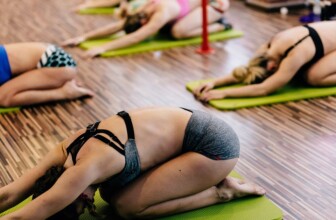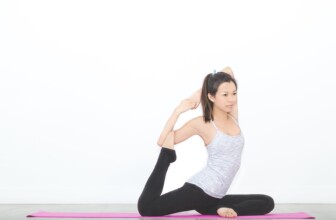Transform Your Life: The Essential Benefits of Regular Exercise and How to Get Started
Table of Contents
- 1. Introduction
- 2. The Physical Benefits of Regular Exercise
- 3. The Mental Benefits of Regular Exercise
- 4. Social Benefits of Exercise
- 5. Creating Your Exercise Routine
- 6. Overcoming Barriers to Exercise
- 7. Frequently Asked Questions (FAQ)
- 8. Resources
- 9. Conclusion
- 10. Disclaimer
1. Introduction
In today's fast-paced world, the importance of a regular exercise routine often takes a backseat to daily responsibilities. However, understanding how pivotal regular physical activity is for overall well-being can catalyze profound life changes. This article delves into the essential benefits of regular exercise and provides comprehensive guidance on how to integrate it into your lifestyle. From enhancing physical health to bolstering mental resilience, the impacts of exercise are transformative.
2. The Physical Benefits of Regular Exercise
Regular exercise is foundational to maintaining optimal health. It contributes to a myriad of physiological improvements that can elevate one's quality of life.
2.1 Improved Cardiovascular Health
Understanding Cardiovascular Health
The heart and blood vessels play a vital role in sustaining life by delivering oxygen and nutrients while removing waste. Regular exercise improves cardiovascular efficiency, enhancing heart health significantly.
The Science Behind It
Engaging in activities like walking, running, cycling, and swimming strengthens the heart muscle. The heart becomes more efficient, and blood flow improves, resulting in lower blood pressure. Studies have shown that individuals with active lifestyles have a lower risk of developing cardiovascular diseases such as hypertension, heart attacks, and strokes.
Real-Life Example
Consider John, a 45-year-old father who led a sedentary lifestyle. After suffering from elevated blood pressure, he decided to incorporate jogging into his routine. Over a six-month period of regular exercise, his cardiovascular health improved; he lost weight and his blood pressure returned to normal levels.
2.2 Strengthening Muscles and Bones
The Role of Strength Training
Muscle and bone health decline with age. Regular strength training enhances muscle mass and bone density—crucial factors for longevity and reducing the risk of osteoporosis or fractures.
Studies on Bone Density
Research shows that individuals who engage in weightbearing exercises like resistance training benefit from improved bone mineral density. This is particularly important for older adults who are at higher risk for osteoporosis.
Case Study
Take Sarah, a 60-year-old woman who began a resistance training program two days a week. After a year, her bone density increased, positively impacting her overall strength and mobility.
2.3 Weight Management
Understanding Body Composition
Exercise significantly influences weight management by increasing the number of calories burned. Coupled with a balanced diet, physical activity plays a key role in maintaining a healthy weight.
The Role of Exercise in Weight Loss
Combining cardiovascular exercise with strength training is often the most effective strategy. While cardio helps burn calories, strength training builds muscle, which burns more calories at rest.
Example in Action
Mike was classified as overweight and struggled to find an effective strategy for weight loss. With a balanced approach—30 minutes of cardio most days and strength training three times a week—he lost 30 pounds over six months and achieved his fitness goals.
3. The Mental Benefits of Regular Exercise
Beyond physical advantages, regular exercise is a powerful tool for improving mental health.
3.1 Reducing Symptoms of Anxiety and Depression
Exercise as a Mood Elevator
Exercise stimulates the production of endorphins and serotonin, enhancing mood and reducing feelings of anxiety. Studies have demonstrated that even a short session of physical activity can alleviate symptoms of depression.
Clinical Evidence
Numerous studies, including those from the American Psychological Association, have shown that exercise is as effective as some medications in treating anxiety and mild depression.
Real-Life Applications
Take Emily, who battled depression throughout her teenage years. After joining a running club, the community aspect and endorphin release from her regular runs led to significant improvements in her mental health.
3.2 Enhancing Cognitive Function
The Connection Between Exercise and Brain Health
Regular physical activity has been linked to enhanced cognitive function and memory due to increased blood flow to the brain. It promotes neurogenesis, the process of generating new brain cells, which is essential for learning and memory.
Research Findings
Studies suggest that individuals who engage in frequent physical activity have a reduced risk of cognitive decline and conditions such as Alzheimer's disease. For example, a study published in the journal Neurology showed that older adults who exercised regularly maintained better cognitive functions compared to sedentary individuals.
Example of Cognitive Improvement
Mark, a 50-year-old experienced cognitive fog, attributed it to stress and a sedentary lifestyle. After committing to regular cycling, he noticed improved concentration and sharper cognitive skills.
4. Social Benefits of Exercise
In addition to individual health improvements, regular exercise fosters social connections and can enhance personal relationships.
4.1 Building Connections
Community through Exercise
Joining exercise groups or sports teams provides opportunities for social interaction. Strong bonds formed in group settings can lead to better social support and enhanced feelings of belonging.
Case Study
Linda decided to join a local yoga class. Beyond improving her flexibility and relaxation, she made lasting friendships that extended beyond the mat, leading to a supportive social network.
4.2 Developing Teamwork Skills
Engagement in Group Activities
Participating in team sports or group exercises promotes teamwork and cooperation. These skills are transferable to other areas of life, such as at work or in personal relationships.
Group Dynamics in Sports
Sports with a collaborative element require participants to work together towards a common goal, helping individuals learn how to communicate effectively and resolve conflicts.
Real-Life Example
After joining a local soccer league, Tom improved his teamwork skills and found new friendships. The experience enriched his social life and had positive implications on his work relationships.
5. Creating Your Exercise Routine
Building a sustainable exercise routine requires careful planning and personal commitment.
5.1 Setting Realistic Goals
Importance of Goal-Setting
Setting specific, measurable, achievable, relevant, and time-bound (SMART) goals can significantly enhance motivation and accountability.
Examples of Realistic Goals
Instead of saying "I want to get fit," establish a goal like "I will exercise for 30 minutes, three times a week." Tracking progress is vital for maintaining motivation.
Case Study
James set a goal to complete a 5K run within three months, starting with short-distance runs and gradually increasing his distance. His structured approach led to success and boosted his confidence.
5.2 Choosing Activities You Enjoy
Importance of Enjoyment in Exercise
Selecting activities you love increases adherence and enjoyment. Consider various forms of exercise, including swimming, biking, dancing, or hiking.
Exploration of Options
Take time to try different workouts until finding which activities resonate. This might be group fitness classes, solo workouts, or outdoor adventures.
Example of Enjoyment in Action
Samantha began with running, but after several months, she found joy in rock climbing, which aligned with her adventurous spirit. This shift kept her motivated in her exercise journey.
6. Overcoming Barriers to Exercise
While the benefits of exercise are significant, many encounter barriers that can make regular activity seem daunting.
6.1 Time Management
Identifying Time Constraints
A common reason for not exercising is the lack of time. It is important to assess daily schedules and identify opportunities for fitting exercise into routines.
Strategies for Time Management
Simple strategies like scheduling workouts as appointments, opting for shorter but more intensive workouts, or incorporating physical activity into daily life (e.g., walking or biking to work) can help overcome this barrier.
Real-Life Example
Rebecca struggled to find time between work and family. By waking up 30 minutes earlier, she established a morning workout routine that later became a cherished part of her day.
6.2 Motivation and Discipline
Understanding Motivation
Motivation can fluctuate, leading to inconsistency in workouts. Establishing intrinsic (internal satisfaction) and extrinsic (rewards) motivations helps boost discipline.
Developing a Support System
Having a workout partner or joining a community can foster motivation. Sharing goals and tracking progress can make exercise feel less isolating and more engaging.
Case Study
Ben wanted to get in shape but struggled with motivation. After partnering with a friend for regular workouts and setting challenges, he maintained a consistent routine and achieved his fitness objectives.
7. Frequently Asked Questions (FAQ)
Q1: How much exercise do I need each week?
A1: The World Health Organization recommends at least 150 minutes of moderate-intensity aerobic exercise or 75 minutes of vigorous-intensity exercise per week, in addition to muscle-strengthening activities on two or more days a week.
Q2: Can I achieve fitness goals through diet alone?
A2: While a balanced diet is crucial for overall health, pairing a healthy diet with regular exercise maximizes weight management, helps build muscle, and improves cardiovascular health.
Q3: What if I have an existing health condition?
A3: Always consult with a healthcare professional before starting an exercise routine if you have pre-existing health conditions. Tailoring an exercise plan to accommodate specific needs can still provide significant benefits.
Q4: How can I stay motivated in my fitness journey?
A4: Setting specific goals, finding workout partners, tracking progress, and engaging in activities you enjoy are effective strategies for maintaining motivation in your fitness journey.
8. Resources
| Source | Description | Link |
|---|---|---|
| American Heart Association | Information on cardiovascular health and exercise | Heart.org |
| Mayo Clinic | Health information and tips on exercise | MayoClinic.org |
| National Institute on Aging | Resources for exercise in older adults | NIA.nih.gov |
| American Psychological Association | Information on mental health and exercise | APA.org |
| Centers for Disease Control and Prevention | Guidelines on physical activity | CDC.gov |
9. Conclusion
Regular exercise is a cornerstone for a healthy and fulfilling life. The benefits are expansive—ranging from improved physical health to enhanced mental well-being and social connections. Embracing a consistent workout routine can transform your life, creating a profound positive impact that extends beyond fitness. The journey toward fitness involves setting realistic goals, overcoming barriers, and fostering motivation. As scientific research continues to unveil the benefits of exercise, embracing fitness as an integral part of your lifestyle can pave the way for a healthier tomorrow.
10. Disclaimer
The information provided in this article is intended for educational purposes only and should not be considered medical advice. Always consult with a healthcare professional or fitness expert before starting any exercise program, especially if you have pre-existing health conditions or concerns. The results of exercise can vary from person to person, and it is important to tailor your fitness regimen to fit your individual health needs and goals.
This article is formatted to provide a comprehensive exploration of the benefits of exercise and ways to implement it into everyday life. The use of real-life examples, a structured approach to content, an FAQ section for clarity, and a resources table for further exploration were all designed to engage and inform readers effectively.










